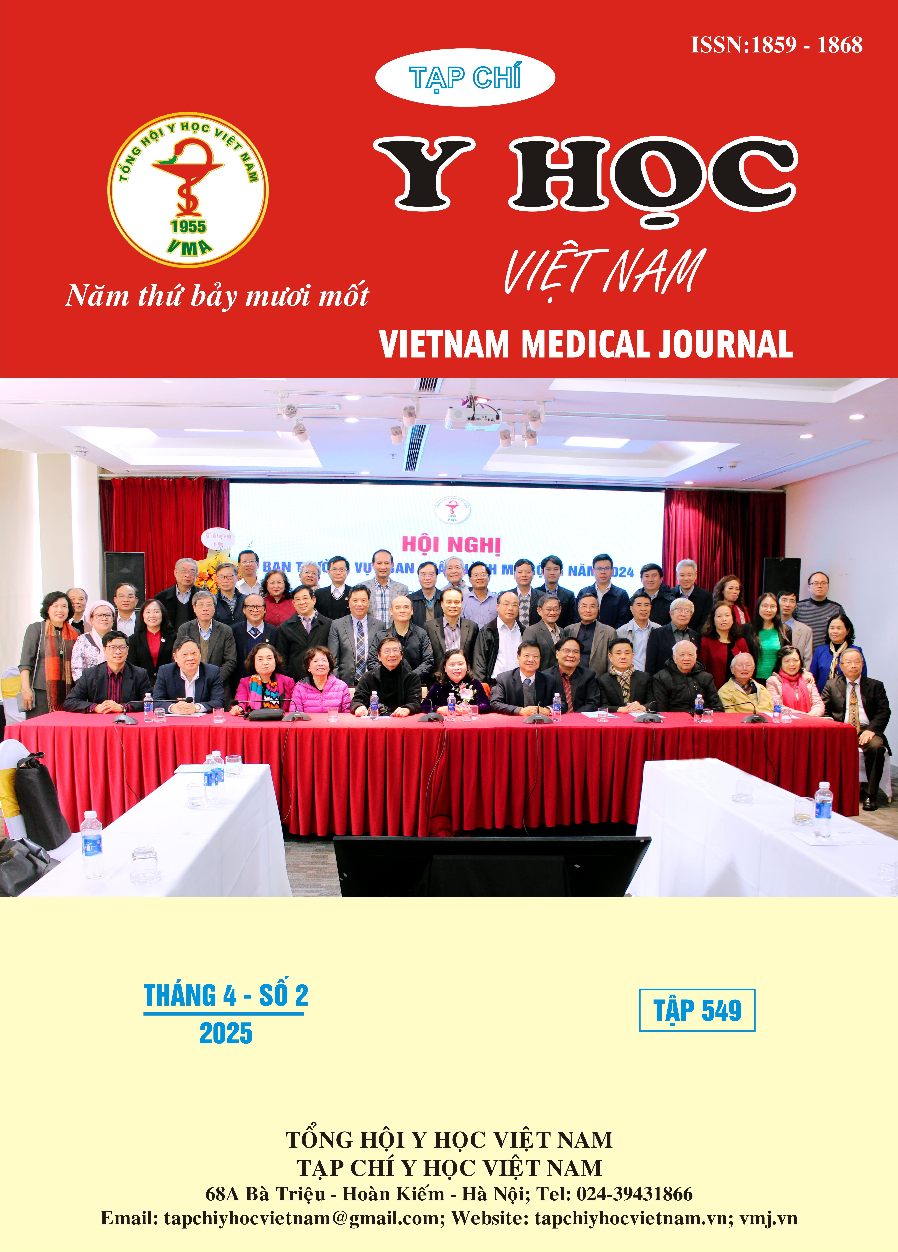ĐẶC ĐIỂM HÌNH ẢNH XẠ HÌNH SPECT/CT VỚI I-131 TRÊN BỆNH NHÂN UNG THƯ TUYẾN GIÁP THỂ BIỆT HÓA CÓ NGUY CƠ TÁI PHÁT CAO
Nội dung chính của bài viết
Tóm tắt
Mục tiêu: Mô tả đặc điểm hình ảnh của xạ hình SPECT/CT với I-131, so sánh với xạ hình toàn thân phẳng trên bệnh nhân (BN) ung thư tuyến giáp thể biệt hóa có nguy cơ tái phát cao. Đối tượng và phương pháp nghiên cứu: Nghiên cứu mô tả tiến cứu trên 125 BN được chẩn đoán xác định ung thư biểu mô tuyến giáp (UTBMTG) thể biệt hóa, đã phẫu thuật cắt toàn bộ tuyến giáp và được phân tầng yếu tố nguy cơ tái phát cao theo ATA (American Thyroid Association) năm 2015, được WBS kết hợp SPECT/CT trước và sau điều trị I-131. Kết quả: SPECT/CT trước điều trị I-131 phát hiện 308 ổ tăng hoạt tính phóng xạ (HTPX). Tại vùng cổ có 291 ổ tăng HTPX, trong đó 57 ổ di căn hạch (18,5%). Trong 228 ổ được WBS nhận định là mô giáp còn lại, SPECT/CT nhận định 21 ổ là tổn thương di căn hạch (9,2%). SPECT/CT thay đổi chẩn đoán ở 72 ổ (24,3%), trong đó nâng giai đoạn ở 57 ổ (19,3%). Có 35 BN di căn (28,0%), trong đó 31 BN di căn hạch cổ, 3 BN di căn xa. SPECT/CT sau điều trị phát hiện thêm 36 ổ tăng HTPX so với SPECT/CT trước điều trị, trong đó có 4 ổ di căn xa, 17 ổ di căn hạch. So với WBS sau điều trị, SPECT/CT phát hiện thêm 2 ổ tăng HTPX, loại trừ 1 ổ nghi ngờ di căn, thay đổi chẩn đoán ở 15/35 ổ phát hiện thêm trên WBS (42,9%), trong đó nâng giai đoạn ở 12 ổ (34,3%). Kết luận: So với WBS, xạ hình SPECT/CT trước và sau điều trị I-131 giúp phát hiện thêm các ổ tăng HTPX, trong đó có các tổn thương di căn hạch, di căn xa và khằng định thêm các ổ tăng HTPX là mô giáp còn lại, hấp thu sinh lý của một số cơ quan.
Chi tiết bài viết
Từ khóa
SPECT/CT, I-131, ung thư tuyến giáp thể biệt hóa, nguy cơ tái phát cao
Tài liệu tham khảo
2. NCCN Clinical Practice Guidelines in Oncology. Thyroid Carcinoma. Version 5.2025 -January 15, 2025
3. Mai Trọng Khoa. Điều trị ung thư tuyến giáp thể biệt hóa bằng Iốt phóng xạ. Điều Trị Bệnh Basedow và Ung Thư Tuyến Giáp Thể Biệt Hóa Bằng I-131. Nhà xuất bản Y học; 2013:186-262.
4. Lê Ngọc Hà. Vai trò của SPECT/CT xạ hình iốt phóng xạ. Điều trị và Quản lý ung thư tuyến giáp thể biệt hóa sau phẫu thuật. Nhà xuất bản Y học; 2023:113-117.
5. Mai Hồng Sơn, Lê Ngọc Hà. Giá trị của xạ hình I-131 SPECT/CT trong chẩn đoán giai đoạn ở bệnh nhân ung thư tuyến giáp thể biệt hóa. Tạp chí Y dược học lâm sàng 108. 2018;Tập 13-Số đặc biệt 7/2018:68-75.
6. Lee SW. SPECT/CT in the Treatment of Differentiated Thyroid Cancer. Nucl Med Mol Imaging. 2017;51(4):297-303.
7. Maruoka Y, Abe K, Baba S, et al. Incremental diagnostic value of SPECT/CT with 131-I scintigraphy after radioiodine therapy in patients with well-differentiated thyroid carcinoma. Radiology. 2012;265(3):902-909.
8. Grewal RK, Tuttle RM, Fox J, et al. The effect of posttherapy 131-I SPECT/CT on risk classification and management of patients with differentiated thyroid cancer. J Nucl Med . 2010;51(9):1361-1367
9. Barwick T, Murray I, Megadmi H, et al. Single photon emission computed tomography (SPECT)/computed tomography using Iodine-123 in patients with differentiated thyroid cancer: additional value over whole body planar imaging and SPECT. Eur J Endocrinol. 2010;162(6):1131-1139.
10. Spanu A, Solinas ME, Chessa F, Sanna D, Nuvoli S, Madeddu G. 131-I SPECT/CT in the follow-up of differentiated thyroid carcinoma: incremental value versus planar imaging. J Nucl Med. 2009;50(2):184-190.


